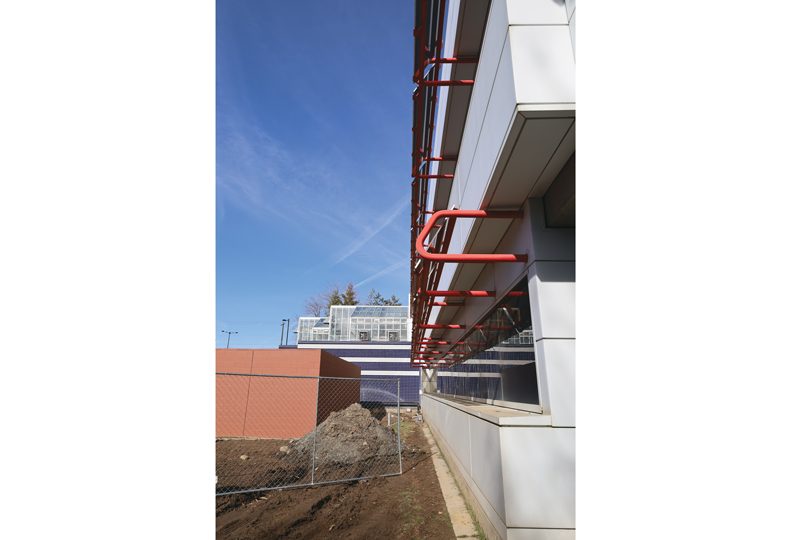
Home » EWU prepares for next step in Science Building updates
EWU prepares for next step in Science Building updates
Phase I construction to wrap up in April

Renovations for one half of Eastern Washington University's 148,000-square-foot Science Building, in Cheney, are anticipated to begin in June.
| Erica BullockMarch 28, 2024
Construction is expected to wrap up in April on the first phase of a two-phase, $110 million renovation of Eastern Washington University's 148,000-square-foot Science Building.
Kris Jeske, director of construction and planning at EWU, says contractor bids will be opened for contractor selection in May for the second phase of renovations, and work likely will begin in June.
First-phase renovations include complete interior upgrades of one half of the building's technology, equipment, furnishings, lab spaces, mechanical and electrical equipment, windows, and lighting.
The second phase of building improvements will mirror Phase I updates for the remaining half of the 45-year-old building, Jeske says.
Spokane-based Integrus Architecture PS designed both phases of the science building. Leone & Keeble Inc., of Spokane, is the contractor on the first phase of the project.
The science building is located at 1175 Washington, near the center of EWU’s Cheney campus, next to the 101,300-square-foot Interdisciplinary Science Center that was completed in late 2020.
The project is contributing to EWU's commitment to decarbonize its campus, and the updated science building will be considerably more efficient than before, Jeske says.
"Everything is new," he says. "It was really just the building structure and shell that was retained, and everything else was remodeled, replaced."
Separately, EWU is planning a $9.9 million Sports and Recreation Center energy upgrade, at 1007 Elm, in Cheney.
Design plans will begin by this summer for the sports center, he says.
EWU will continue to invest in energy updates to align with current educational standards and to comply with Washington state's new energy improvement mandates, says Jeske.
This summer, EWU will update its comprehensive campus master plan to guide priorities for the campus for the next 10 years. The plan will consider sustainability and decarbonization in addition to trends in enrollment and higher education in general, explains Jeske.
"Eastern is really focusing on future sustainability—not only because it's a good thing to do and the direction that most higher education is going, but also to meet those state mandates and requirements."
Building the Inland Northwest Real Estate & Construction Education & Talent
Related Articles
Related Products
Related Events





![Brad head shot[1] web](https://www.spokanejournal.com/ext/resources/2025/03/10/thumb/Brad-Head-Shot[1]_web.jpg?1741642753)